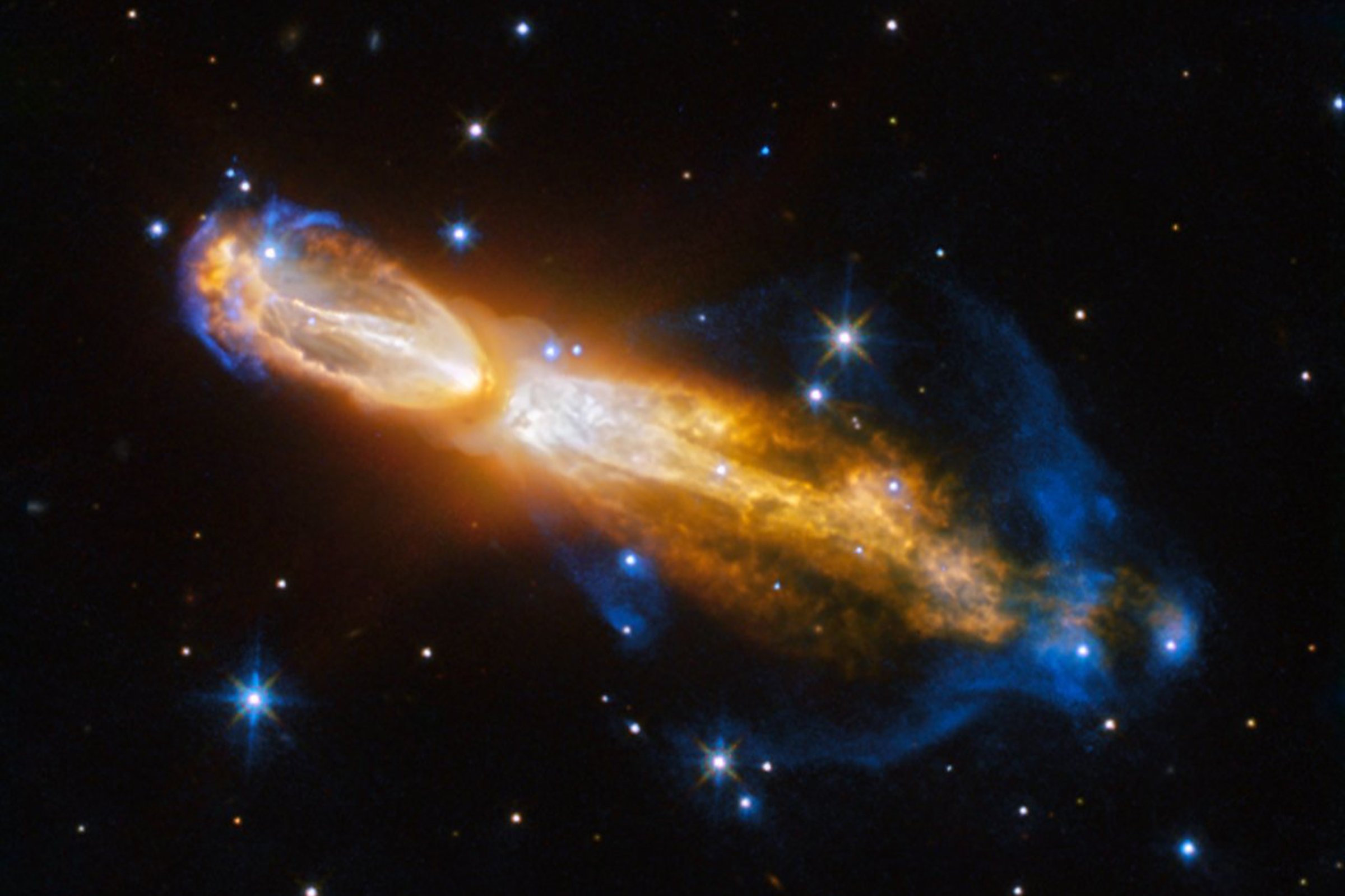
NASA and the European Space Agency’s (ESA) Hubble Space Telescope has captured a rare image that shows the spectacular death of a star.
The dying star can be seen transforming from a red giant to a planetary nebula called the Calabash Nebula, technically known as 231.8+04.2, according to the ESA. During this transformation, the dying star blows its outer layers of gas and dust out into the surrounding space at a speed close to 621,371 miles per hour.
The nebula is also known as the Rotten Egg Nebula, the ESA reports, because it contains a lot of sulphur, which smells like rotten egg when it combines with other elements. Luckily, as the nebula resides over 5,000 light-years away in the constellation of Puppis, humans don’t need to worry about the stench.
The star’s death occurs “within the blink of an eye — in astronomical terms,” according to the ESA, which explains why this kind of photo is hard to come by. Next, the star will evolve into a fully formed planetary nebula over the next thousand years.
More Must-Reads From TIME
- The 100 Most Influential People of 2024
- Coco Gauff Is Playing for Herself Now
- Scenes From Pro-Palestinian Encampments Across U.S. Universities
- 6 Compliments That Land Every Time
- If You're Dating Right Now , You're Brave: Column
- The AI That Could Heal a Divided Internet
- Fallout Is a Brilliant Model for the Future of Video Game Adaptations
- Want Weekly Recs on What to Watch, Read, and More? Sign Up for Worth Your Time
Write to Kate Samuelson at kate.samuelson@time.com